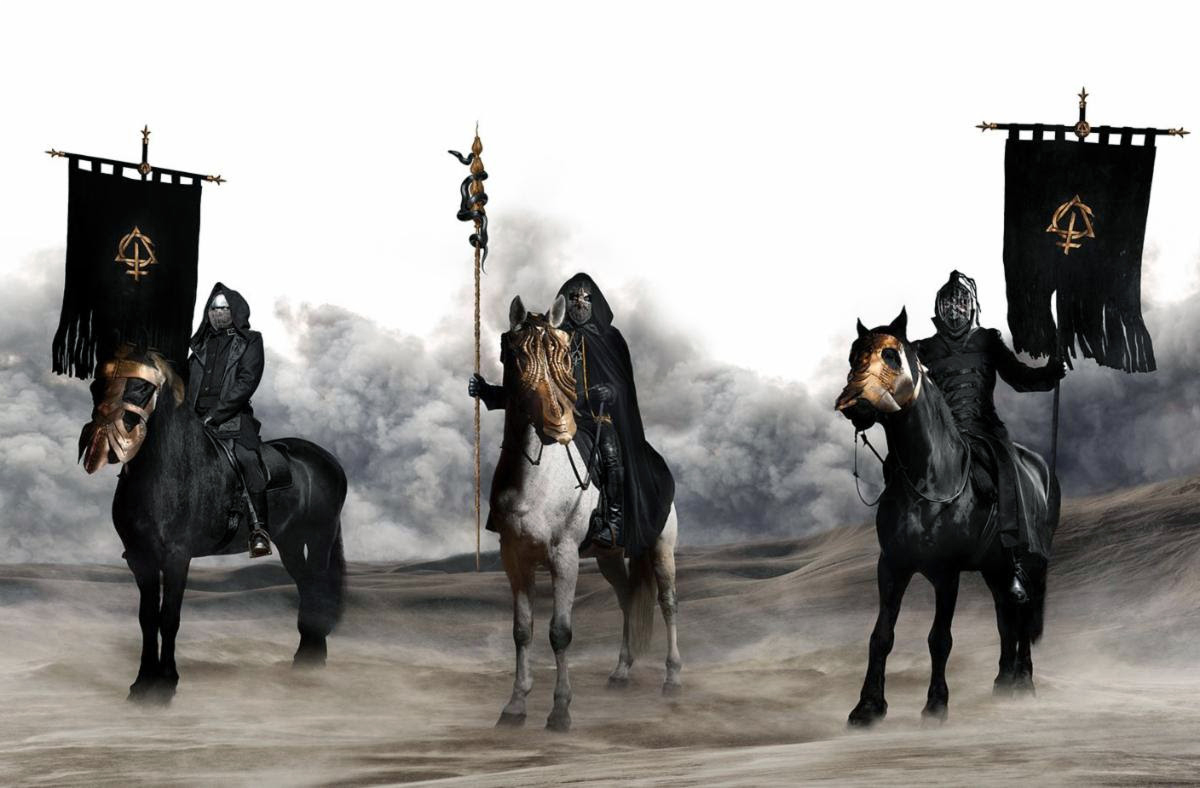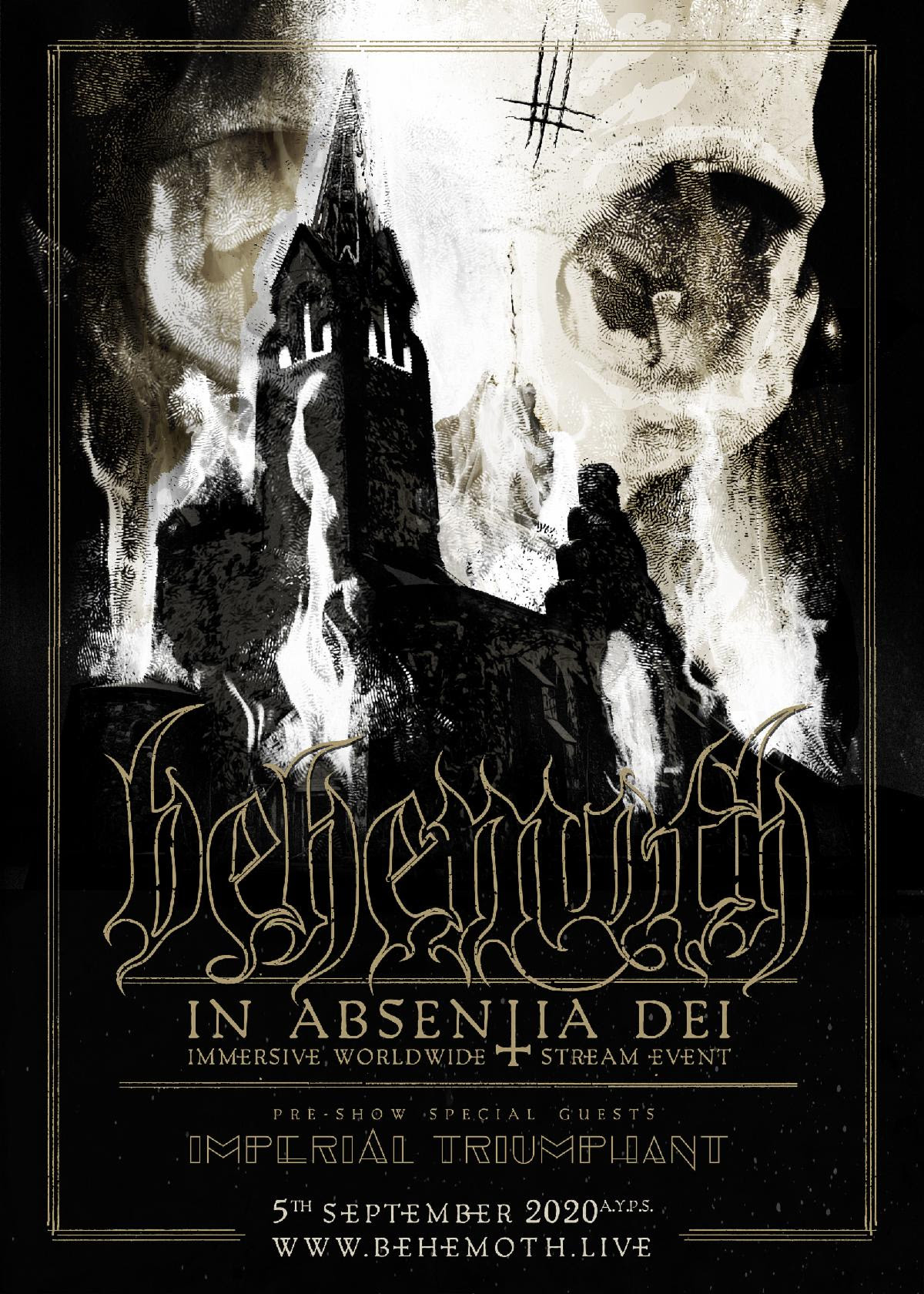Metal
Behemoth’s ‘In Absentia Dei’ Livestream was a Night No Church Will Forget [Show Review]

There are two salient lessons I have learned from the livestream event, In Absentia Dei, blackened death giants Behemoth hosted this past weekend:
First, if you need to eradicate any and all lingering traces of Jehovah or his ilk from a space, then Behemoth ought to be your first port of call. Of course, this should come as no surprise – their 2014 genre-redefining record, The Satanist, or frontman Nergal’s very public confrontations with the Catholic church in his home country of Poland, or even his on-record formal apostasy from said church in 2012 all add up to a long-running battle royale between the world’s most successful corporation and (arguably) the world’s most successful extreme metal band. The venom with which Behemoth unleash unholy fury on the once-hallowed ground that formed their stage is likely to leave a mark for years to come – a modern take on Gorgoroth’s infamous 2004 Black Mass Krakow in terms of irreligious iconoclasm set to music.
The second lesson, and the one I’ll expand on in far more detail, is the more relevant one in today’s slightly peculiar climate. And that lesson is, in brief, that Behemoth is a pioneering act in extreme metal when it comes to negotiating the ever-changing waters of digital fan engagement. Even without the looming shadow of COVID-19, this arena is set to become essential to the longevity and economic success of any performing artist in the uncertain times ahead.
The concept of a livestream concert is, in itself, nothing novel, but the Behemoth foursome do take things a step further, in a number of ways: starting out, the idea of exclusivity is emphasized via “early access” for dedicated fans belonging to the mailing list. This is carried over to a reduced ticket price for early adopters, pushing for a greater initial sales rush. This is an easy segue into the third area they’re actively pursuing – marrying digital to offline. On top of the “virtual” tickets providing show access, they also offered the option to buy physical tickets – as well as a plethora of themed merchandise bundles.
At this juncture, I already hear hisses of derision at Behemoth’s mercenary nature, but let’s not forget or worse, undervalue, the effort and skill required to turn any creative endeavour – not just musical – into a career. Let alone a financially rewarding one. Show me any social media keyboard warrior calling Behemoth “sellouts” or “overrated mainstream metal” and I’ll happily hold a mirror up to show them a fat bunch of grapes gone sour with an inability to make money off music.
But these weren’t all the avenues Behemoth explored in their clever harnessing of technological forces. Other bands – Fleshgod Apocalypse spring immediately to mind – have sold single-stream-themed merch very recently to help offset losses incurred by 2020’s abrupt touring cancellations, but Behemoth decided to take things even further, yet again. In this case, In Absentia Dei offered two viewing options: a “standard,” or director’s cut version edited together (almost flawlessly, I only noticed one minor camera movement slip during “Decade of Therion”) by the studio responsible for so many of Behemoth’s recent music video offerings, Grupa13, or an immersive version, where viewers had the option to choose camera angles themselves.
The trailer for the upcoming biopic from Artax Film, Adam the Apostate, goes into more detail regarding Nergal’s religious ideology.
I do have to point out that it was a pleasure to see a multi-camera setup that did not involve cameramen getting underfoot, relying instead on automation: the only actors onscreen were Behemoth themselves and their assorted support acts – which we will get to shortly. By inviting actual “audience participation,” Behemoth delved one step further into the experience economy and made their consumers actual co-creators of the content – a concept flighted by Alvin Toffler way back in 1980 in his book The Third Wave, where he predicted a “rise of the prosumer” in business interactions.
Lastly, and building on this last “experience” consideration, Behemoth really went the whole hog in terms of supporting visuals outside of musical performance: fire breathers, horseback stunts, flaming arrows, burning tri-cross emblems, trapezes and even a live suspension act – from insertion of hooks to final suspension, complete with jaw-clenching rivulets of blood. Factor in the Act III interlude “Chwała mordercom Wojciecha (997-1997 dziesięć wieków hańby)” which featured Nergal spewing bile on religious institutions via megaphone and your melodrama meters may just be near to overflowing. Just another way to increase audience engagement, perfectly executed.
The setting (an abandoned, ruined yet still privately owned church), dramatic lighting and overall theatrics do make the whole performance translate as more of a two-hour music video than a live show. Again, not an entirely novel tactic: Rammstein’s 2016 collaboration with Swedish director Jonas Åkerlund, Rammstein: Paris, was exactly that: a long-form music video. The major difference between the two would be the post-production/editing timeframe; Åkerlund spent many months in the cutting room, whereas the crew at Grupa13 put this together almost on the fly, B-roll drone footage of the church itself included.
The most recent example of Grupa13’s music video production for Behemoth, “Bartzabel.”
All this shows Behemoth’s clever grasp of the minutiae of digital fan engagement, but that is hardly a surprise given Nergal’s active social media feeds – as well as the business savvy he has historically exhibited in his various “side projects,” from his barbershops to his vintage t-shirt businesses. What also should be addressed is the musical performance itself: from the opening first-ever live rendition of “Evoe” (off the band’s 2020 EP, A Forest – read our review here), the career-spanning setlist was an example of musical curation at its best. Evergreen crowd-pleasers (“Conquer All” or “Chant for Eschaton 2000”) slotted neatly alongside historic turns (“From the Pagan Vastlands” and “Prometherion” enjoyed their first live deliveries since 2009 and 2011 respectively) while providing firm support for fresh new cuts that showcase Behemoth’s newfound respect for the hook, like “Bartzabel” or “Ora Pro Nobis Lucifer.”
This doesn’t even take into account the pre-show performance by the up-and-coming Imperial Triumphant, whose mask-clad, jazz-inspired approach to extreme metal set the stage in avant-garde opulence. In keeping with digital terms, an easter egg and a very welcome one indeed.
Overall, there is no part of me that regrets paying for this experience: for less than the price of a movie ticket, I enjoyed one of the finest, most gripping pieces of musical theatre I have ever seen – and, what’s more, I got to stream it repeatedly for 72 hours after its premiere. I can only hope a physical version is released soon to take the offline engagement even further.
The ‘rehearsal’ tapes made public before the actual show give a small glimpse into the massive scale of the production.
-

 Music7 days ago
Music7 days agoTake That (w/ Olly Murs) Kick Off Four-Night Leeds Stint with Hit-Laden Spectacular [Photos]
-

 Alternative/Rock1 day ago
Alternative/Rock1 day agoThe V13 Fix #011 w/ Microwave, Full Of Hell, Cold Years and more
-

 Alternative/Rock1 week ago
Alternative/Rock1 week agoThe V13 Fix #010 w/ High on Fire, NOFX, My Dying Bride and more
-

 Features7 days ago
Features7 days agoTour Diary: Gen & The Degenerates Party Their Way Across America
-

 Culture1 week ago
Culture1 week agoDan Carter & George Miller Chat Foodinati Live, Heavy Metal Charities and Pre-Gig Meals
-

 Music1 week ago
Music1 week agoReclusive Producer Stumbleine Premieres Beat-Driven New Single “Cinderhaze”
-

 Indie1 day ago
Indie1 day agoDeadset Premiere Music Video for Addiction-Inspired “Heavy Eyes” Single
-

 Alternative/Rock2 weeks ago
Alternative/Rock2 weeks agoThree Lefts and a Right Premiere Their Guitar-Driven Single “Lovulator”














